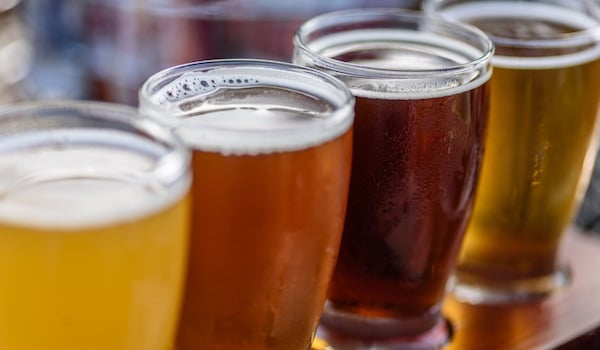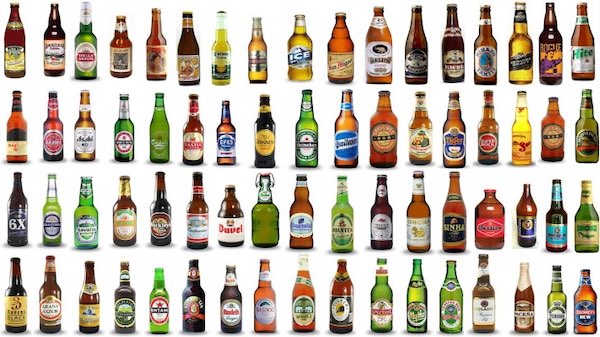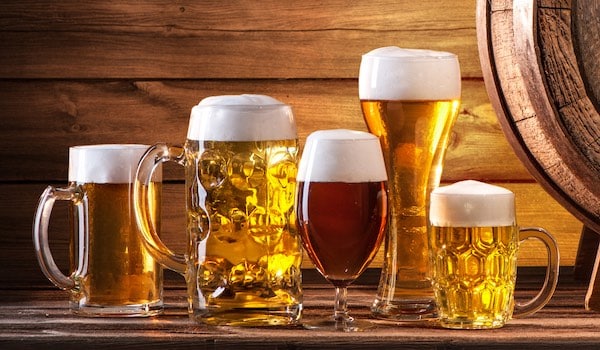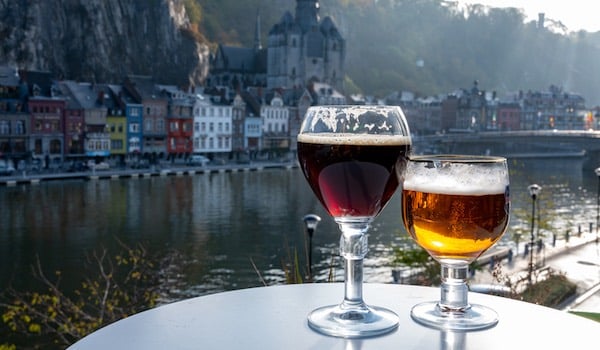
In This Article
Introduction to Belgian Beer
Before American craft beer truly took off, adventurous drinkers had to rely on dusty import bottles and rare draft lines to get their flavor. Guinness and German lagers were the most popular options. Still, the real heads knew the bottles of Belgian ales (usually tucked away on the corner shelf) were where the most interesting drinking experiences were found.
With all due respect given to Czech and German lagers, the Belgian brewing landscape is far more diverse and vibrant. From malty Trappist ales to tart lambics, there are so many different flavors on offer. The brewing traditions and history of Belgian brewing are equally, if not more, fascinating. Brewers in this country, some of whom were clergymen, dug further down the “beer rabbit hole” than their European counterparts with inventive brewing techniques and ingredient additions.
Belgium’s contributions to brewing are so monumental that they’ve earned UNESCO recognition as part of the country’s cultural heritage. Here’s what makes Belgian beer so legendary.
What Makes Belgian Beer Unique?
Centuries of Brewing History
The people of Flanders and the surrounding region that now make up Belgium have been making beer since the Middle Ages. For much of Belgian brewing history, the industry was dominated by Trappist monks and countryside communities making tiny batches of special beers that reflected their location and culture.
These clergymen were nothing if not dedicated to their craft, as they refined brewing techniques to produce Trappist and abbey ales that were far more nuanced than what was standard at the time. Over the next few centuries, Belgian brewers developed diverse styles like dubbels, tripels, lambics, saisons, and witbiers.
Using unique yeasts and local ingredients banned in other traditions, Belgian brewers embraced creativity and complexity that no other brewing tradition had managed at that point. To some extent, you could say these monks treated beer more like wine.
Traditional Methods and Ingredients
- Bottle conditioning and carbonation: In Trappist ales, dubbels, tripels, and saisons, sugar and yeast are added before bottling to create natural carbonation. This produces finer bubbles and adds aging potential.
- Special yeast strains: Belgian yeasts tend to ferment at warmer temperatures (68–85°F / 20–29°C), which results in fruity esters and spicy phenols. Belgian yeast contributes clove, banana, pepper, and bubblegum flavors, which are hallmarks of Belgian beers.
- Open fermentation: Monks and farmers will utilize wild and airborne yeasts rather than cultivated strains by cooling the wort in open vessels (coolships) to expose it to natural microflora. The beers are then aged in oak barrels (especially Lambic, Gueuze, and Kriek) to take on funky, tart, complex flavors.
- Unique spices and herb additions: While the Germans confined their brewing traditions through their Reinheitsgebot law, Belgian brewers traditionally added ingredients like coriander, orange peel, candi sugar, and herbs to spice things up!
- Addition of candi sugar: Candi sugar (derived from beets) is added to lighten the body while increasing alcohol and maintaining dryness.
- Blending and aging: Because of the yeast strains and alcohol content of certain Belgian beers, you can allow styles like Geuze, Lambic, and Trappist ales to mellow out over time. Some brewers blend fresh and aged beers for added nuance.
Popular Belgian Beer Styles (And What to Expect)
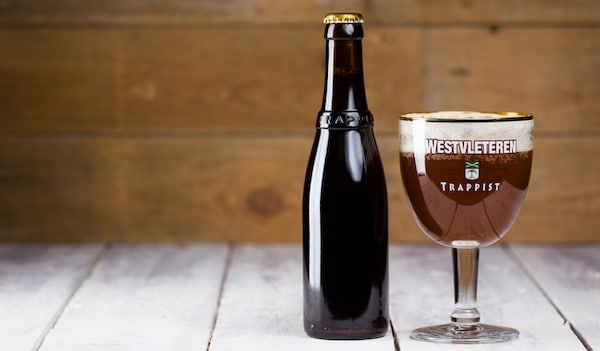
Trappist Ales
Brewed by monks at monasteries, these ales are typically strong and undergo bottle conditioning. Trappist ales must always follow strict criteria, including being brewed in a monastery under the supervision of monks, and the proceeds must go to charity.
Sub-styles: Dubbel, Tripel, Quadrupel
Characteristics: Malt-forward, spicy, and effervescent, with a range from dry to sweet
ABV: 6%–10%
Famous breweries: Westmalle, Chimay
Lambics & Gueuze
These beers are spontaneously fermented in coolship containers with naturally occurring yeast strains unique to the brewery’s location. Many are aged in oak barrels and undergo secondary fermentation.
Sub-styles: Lambic, Kriek, Framboise, Geuze
Characteristics: Tart, funky, often fruit-infused
ABV Range: 3.5%–6%
Breweries: Cantillon, Boon
Saison (Farmhouse Ale)
Saisons are floral, peppery, and fruity with a rustic, sometimes funky character that finishes dry. Some malt sweetness may be present, but expressive yeast strains dominate the flavor.
Breweries: Saison Dupont, Brasserie de Blaugies
ABV: 4%–5%
Belgian Blond & Golden Ales
Balanced and light-bodied yet strong in alcohol, these beers feature fruity-spicy yeast character, malt sweetness, and subtle hops. High carbonation is typical.
Try: Leffe Blonde, Duvel, Affligem, La Chouffe
ABV Range: 6%–8.5%
Witbier (White Beer)
Made with wheat, orange peel, and coriander, Witbier is light, cloudy, and citrusy with subtle spice and little hop bitterness.
Try: Hoegaarden, St. Bernardus Wit, Blanche de Bruxelles
ABV: 4.5%–5.5%
10 Must-Try Belgian Beer Brands
- Chimay Blue – Rich and dark with plum and caramel hints; one of the most balanced Trappist ales.
- Rochefort 10 – A strong (11.3% ABV) winter warmer with notes of raisin, fig, and spice.
- Saison Dupont – Iconic farmhouse ale with lovely spice, floral notes, and a dry finish.
- Duvel – A dangerously drinkable golden ale with floral aromas, light bitterness, and a dry finish.
- Lindemans Framboise – A tart yet drinkable raspberry lambic.
- Orval – Dry, funky, and bitter—an unmistakably unique pale ale.
- Westvleteren 12 – Known as one of the world’s best beers, rich, subtle, and nearly mythical in status.
- St. Bernardus Abt 12 – A robust 10% Trappist Quad with spice, malt complexity, and consistent quality.
- Fantôme Saison – Bubbly like champagne but bursting with citrus flavor and aroma.
- Duchesse de Bourgogne – A Flanders red ale matured in oak, offering sour fruit, vinegar, and spice notes.
Belgian Beer Glassware & How to Drink It
Proper glassware enhances aroma, carbonation, and presentation. Here are the key styles:
- Tulip Glass: Great for Tripels, Saisons, Blond Ales, and Sours. Captures floral aromas.
- Chalice or Goblet: Perfect for heavy, carbonated Trappist ales. Regal and traditional.
- Flute: Best for Lambics and Gueuze; showcases bubbles and colors.
- Tumbler: Ideal for Witbiers; allows heavy carbonation to settle and aromas to rise.
Belgian Beer and Food Pairings
| Beer Style | Food Pairing |
|---|---|
| Dubbel | Beef stew (Carbonnade Flamande) |
| Witbier | Mussels, goat cheese, citrus salad |
| Saison | Roasted chicken, grilled vegetables |
| Lambic (Kriek) | Chocolate cake, duck breast |
| Tripel | Brie, roast pork, spicy Asian dishes |
FAQs About Belgian Beer
Why is Belgian beer so strong?
It depends on the style. Dubbels, Tripels, and Quads use added sugars and strong yeast strains, often undergoing bottle conditioning. However, many styles like Saison and Lambics are low in alcohol.
What does “Trappist” really mean?
It refers to beer brewed by monks within a Trappist abbey. It must meet legal criteria, including on-site brewing under monastic supervision, and proceeds going to charity.
What’s the difference between dubbel and tripel?
Dubbels are medium-bodied with caramel malts, while Tripels use lighter malts for a lighter body. Both use candi sugar to boost alcohol and create a dry finish.
Can I cellar Belgian beer?
Yes. Styles like Lambic, Gueuze, Flanders Red, and Trappist beers age well and develop complexity over time.
Where can I buy authentic Belgian beer?
Specialty bottleshops or craft beer stores often carry imported Belgian options.
Conclusion
Belgium’s beers are some of, if not the world’s most fascinating. There’s a reason your local craft brewer who churns out IPAs reveres these brands above all others. There’s a lot to explore, so make sure to do your research. Let us know what brands we should be seeking out in the comments—and enjoy these boozy Quads and Tripels responsibly!


